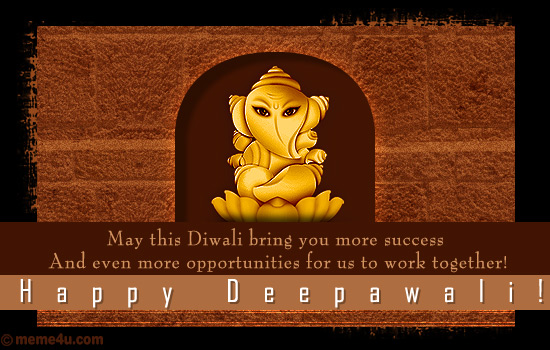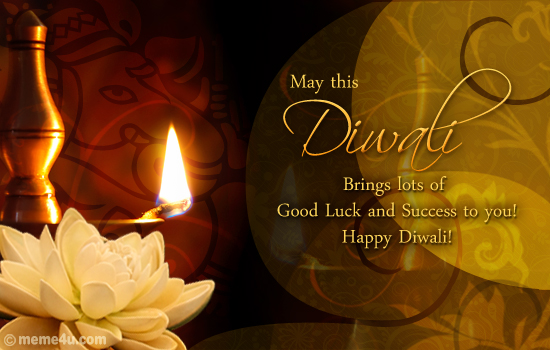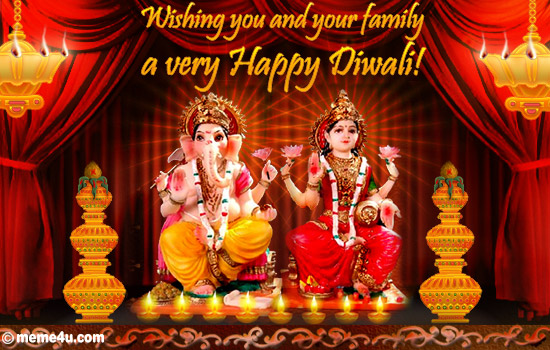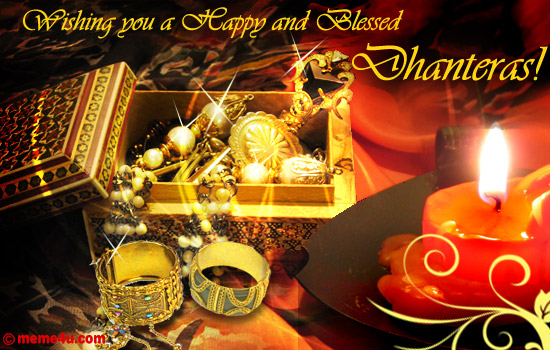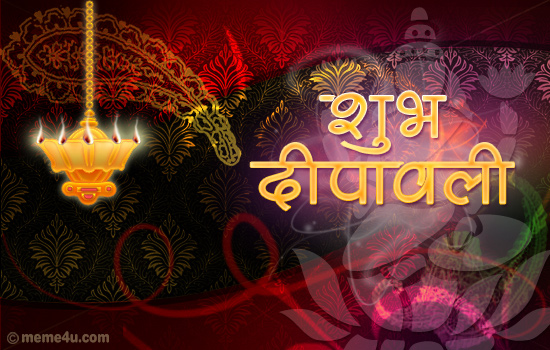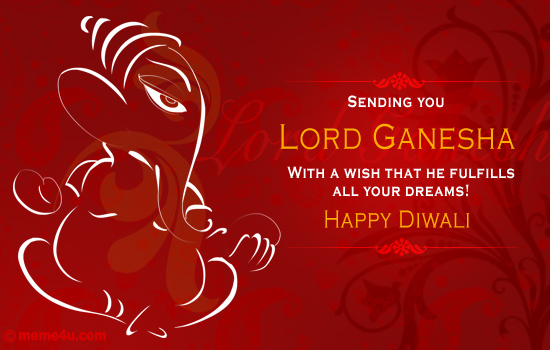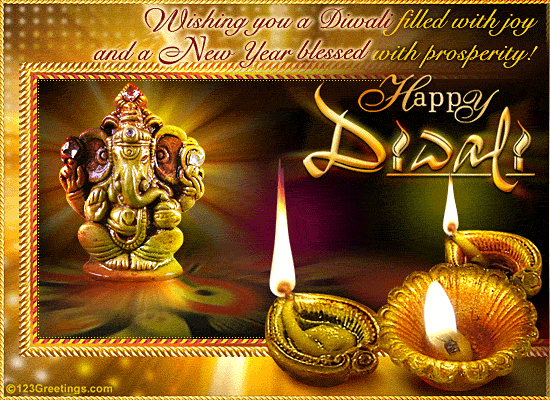Regional Variations within India
The celebrations vary in different regions:
South India
In South India, the festival is called Deepavali- In Southern India, Narakasura vadha is the main day, with celebrations involving bursting firecrackers at dawn after Lakshmi puja.It is celebrated as Narakachaturdashi in Karnataka,
- Deepavali is one of the seven most important festivals of Andhra Pradesh. It is very popular with children who celebrate Deepavali because of the excitement of bursting firecrackers. Special shops to sell firecrackers are set up in all towns, cities and bigger villages. There are some pseudo-traditional customs followed such as buying new clothes for this festival. Buying new home or vehicles is considered auspicious. Special sweets are made too. Some eateries in Hyderabad make some delicious sweets during Deepavali which will not be available at any other time. Meat and alcohol are generally not consumed. Tradition has it that Andhraites gift sweets during Deepavali. Some areas host local stage story telling called Hari Katha. Some areas may put a huge Narakasura dummy made with firecrackers. This will be burst by a person dressed as Lord Krishna or, more accurately, a costume of Satyabhama, the consort of Lord Krishna, who actually killed the demon Narakasura; an event that is celebrated as Deepavali for generations. The evening sky of Deepavali is a colourful sight to watch.
- The main festival in Karnataka is on the first day - Narakachaturdashi and third day - Balipadyami, with no celebration on the second day of "Amavasye". The festivities begin a day, during which water is stored (following the tradition, since running water was not available with ease, and it had to be carried from nearby ponds and lakes) for the next day's oil bath in the early hours of the morning. Then the entire house is cleaned and new clothes are purchased for the entire family (signifies becoming a new/better person by giving up darkness within us) which is followed by lighting of oil lamps around the house and bursting firecrackers. The third day is Bali Padyami celebrating Vamana's victory over "Mahabli"
- In Tamil Nadu and Kerala it is celebrated as Deepavali. People celebrate this by lighting deepams, bursting firecrackers, wearing new clothes and sharing sweets. Even though not celebrated much, it comes as one of the biggest festivals in Kerala too, like Onam, Vishu, Christmasn & Eid-ul-fitr. A traditional visit to the Temple is a significant ritual of the day. In Tamil Nadu, the "row of lamps" are lit a few days after deepavali for a series of days called "Karthikay deepam".
Andhra Pradesh
In North India, Diwali is usually celebrated during the evenings with fireworks and diyas. However, in Andhra Pradesh, the festivities start out at the crack of dawn and carry on well into the night. Most people make a trip to the local temple along with their families to seek the blessings of their respective Gods. The night sky is lit up with a scintillating array of noisy fireworks.
People decorate their homes much like the Hyderabadi royalty would have done centuries ago. Homes are lit up with hundreds of diyas and colorful Diwali Rangolis (link) adorn the doorways. For children, it is similar to Christmas in western countries; they get new clothes to wear, delicious food to gorge on, and for once, they are allowed to make much noise. In Hyderabad, there is a unique tradition of bathing a buffalo on Diwali day. Another custom involves decorating homes with paper figures.
Festivities cut across boundaries to move on from the small villages to the big towns, often beginning almost a month before Deepawali. Sales of expensive silk saris, jewelry, ornaments, and household goods increase. From the poor to the rich, everyone indulges in the largest shopping spree of the year. Sweets, which are an integral part of any festival in Andhra Pradesh, are prepared or purchased from shops. The festival is full of messages depicting one or more aspects of human life, relationships, and ancient traditions.
Maharashtra
In Mahrashtra, Diwali starts from Vasubaras which is the 12th day of the 2nd half of the marathi month Ashvin. This day is celebrated by performing an Aarti of the cow and its calf- which is a symbol of love between mother and her baby.
The next day is Dhanatrayodashi or Dhanteras. This day is of special importance for traders and business people.
The 14th day of Ashvin is Narakchaturdashi. On this day, people wake up before sunrise and bathe after rubbing scented oil on their body (they also bathe using Utna). After this the entire family visits a temple and offers prayers to their God. After this visit, everyone feasts on Faralkaranji", "ladoo", "shankarpale", 'anarase' and "mithai" as well as some spicy eatables like "chakli", "shev" 'kadboli' and "chivda". which is a special Diwali preparation consisting of delectable sweets such as "
Then comes Lakshmi- poojan. It occurs on Amavasya i.e. no moon day. The dark night is illuminated by lamps and at dusk crackers are burst. New account books are opened after a pooja. The Bombay Stocky Exchange performs a token bidding called Muhurta bidding. Generally the traders do not make any payments on that day (according to their belief Lakshmi should not be given away but must come home). In every household, cash, jewellery and an idol of the goddess Lakshmi is worshipped. Friends, neighbours and relatives are invited over and celebrations are in full swing. The broom used to clean one's house is also worshipped as a symbol of Lakshmi in some places .
Padwa' is the 1st day of the new month ' Kartik in the Hindu calendar. It marks the start of Hindu financial year. Its a special day for Husband and wife. The wife puts tika on her husbands forehead and gets an expensive gift.
Bhaubeej ' it is the time where in the bond of love between a brother and sister is further strengthened as the sister asks God for her brother/s long and successful life while she receives presents from her beloved brother/s.
Tulsi vivah also known as Khopdi Ekadashi which is considered as an important part of diwali comes on immediately next ekadashi. This day marathi people do lighting and bath the statues of god. it is considered a very auspicious day. This year both Bakri Id and Khopdi ekadashi are falling on the same day - 17th November, 2010.
Homes are cleaned and decorated before Diwali. Offices perform puja. Bonuses and holidays are granted to employees on these auspicious days. People buy property and gold on these days too. Children build replica forts in memory of the founder of Maratha Empire, Shivaji maharaj. For children, Fire works, new clothes and sweets make Dipavali the most eagerly awaited festival of the year.
Orissa
Deepavali is celebrated with great joy. Rows of oil lamps, candles adorn the thresholds of all houses. Crackers are burst, sweetmeals are relished and distributed. Some people also worship goddess Kali and some goddess Laxmi. Tarpanam is done in the early morning of deepavali. All the members of the household gather together just after dusk. A rangoli of a sailboat is made on the ground. The boat has seven chambers. Over the drawing of each different chamber several items are kept - cotton, mustard, salt, asparagus root, turmeric and a wild creeper. Over the central chamber are the offerings meant for prasad. Perched over the prasad is a jute stem with a cloth wick tied around the edge. It is lit at the beginning of the puja. All members of the family hold a bundle of jute stems in their hands, Lighting their respective bundles from the flame on the rangoli, they raise them skywards chanting:
"Bada badua ho, andhaara re aasa, aluwa re jaa. Baaisi pahaacha re gada gadau tha." ("O forefathers, come to us in this dark evening, we light your way to heaven. May you attain salvation on the 22 steps of the Jagannath temple of Puri.)
Beside the rangoli, a mortar and pestle and a plough are also kept and worshiped. After the puja and offerings, the family celebrates Diwali festival by bursting crackers. As in other regions, most people prefer to celebrate it in their own homes, though family gatherings are also common. For Diwali houses are brightly lit, with the doors and windows kept open as Lakshmi is supposed to visit every home, and you can't afford to leave it dark and abandoned. Various kinds of Pithaa are prepared and given to the dieties and forefathers,and enjoyed with family and friends.The festival is a famous affair in Bhadrak, Cuttack & Jaipur area.
Kolkata
Kali Puja is light-up night for Kolkata, corresponding to the festival of Diwali (pronounced Dipabali in Bengali), where people light candles in memory of the souls of departed ancestors. The Goddess Kali is worshipped at night on one night during this festival. This is also a night of fireworks, with local youth burning sparklers and crackers throughout the night. Kolkata had to pass legislature a few years back to ban fireworks which break the 65 decibel sound limit, as ambient noise levels were going up to 90 decibels or more in parts of the city.
Goa & Konkan
Diwali begins in Konkan and Goa on the day of Naraka Chaturdashi.The houses are cleaned and decorated with Kandil, lamps, mango leaves, and marigold flowers. The utensils are made to shine, filled with water, and decorated for the holy bath the following morning. On this day, paper-made effigies of Narakasura, filled with grass and crackers symbolising evil, are made. These effigies are burnt at around four o'clock in the morning the following day/ Crackers are burst, and people return home to take a scented oil bath. Lamps are lit in a line. Aarti of the men,gifts are exchanged,a bitter berry called as kareet is crushed under the feet in token of killing Narkasur, symbolising evil and removal of ignorance. Different varieties of Poha and sweets are made and eaten with family and friends. Festivities continue til Tulsi vivah and lamps are lit every evening. Celebrations include Lakshmi puja on the Diwali day,Krishna puja or Govardhan puja and cattle worship on Balipatipada day, Bhaubeej, and Tulsi vivah. In Konkan diwali is called "Chavdis". The women of the house perform
Mehndi is applied on women's hands at a Diwali Mela.
To add to the festival of Diwali, fairs (or melas) are held throughout India. Melas are to be found in many towns and villages. A mela generally becomes a market day in the countryside when farmers buy and sell produce. Girls and women dress attractively during the festival. They wear colourful clothing and new jewelry, and their hands are decorated with henna designs.
Diwali is celebrated in various parts of the world, particularly those with large populations of Indian and Hindu origin. These include countries such as Australia,Canada, Fiji, Guyana, Surinam, Indonesia, Japan, Kenya, Malaysia, Mauritius, Myanmar, Nepal[15], New Zealand, Singapore, South Africa, Sri Lanka, Tanzania, Trinidad and Tobago, Thailand, the United Kingdom and the United States. With more and more Indians now migrating to various parts of the world, the number of countries where Diwali / Deepavali is celebrated has been gradually increasing. While in some countries it is celebrated mainly by Indian expatriates, in others it has become part of the general local culture. In most of these countries Diwali is celebrated on the same lines as described in this article with some minor variations. Some important variations are worth mentioning.
In Nepal, Diwali is known as "Tihar" or "Swanti". It is celebrated during the October/November period. Here the festival is celebrated for five days and the traditions vary from those followed in India. On the first day (Kaag tihar), crows are given offerings, considering them to be divine messengers. On the second day (Kukur tihar), dogs are worshipped for their honesty. On the third day, Laxmi puja and worship of cow is performed. This is the last day according to Nepal Sambat, so many of the businessmen clear their accounts on this day and on finishing it, worship goddess Laxmi, the goddess of wealth. The fourth day is celebrated as new year. Cultural processions and other celebrations are observed in this day. The Newars celebrate it as "Mha Puja", a special ritual in which the body is worshipped to keep it fit and healthy for the year ahead on this day. On the fifth and final day called "Bhai Tika", brothers and sisters meet and exchange gifts.
In Nepal, family gathering is more significant during Diwali. People in the community play "Deusi and Bhailo" which is a kind of singing and dancing forming a group. People go to all the houses in the community and play songs and dance, and give blessing to the visited house, whereas the home owner gives some food like rice grains, Roti,fruits and money. After the festival, people donate some part of collected money and food to the charity or welfare groups and rest of the money and food, they go for picnic. People also play swing called Dore Ping made out of thick ropes and Pirke Ping or Rangate Ping made out of woods.
In Trinidad and Tobago, communities all over the islands get together and celebrate the festival. One major celebration that stands out is the Diwali Nagar, or Village of the Festival of Lights. It features stage performances by the east Indian cultural practitioners, a folk theatre featuring skits and plays, an exhibition on some aspect of Hinduism, displays by various Hindu religious sects and social organizations, nightly worship of Goddess Lakshmi, lighting of deeyas, performances by various schools related to Indian culture, and a food court with Indian and non-Indian vegetarian delicacies. The festival culminates with magnificent fireworks displays ushering in Diwali. Thousands of people participate in an atmosphere devoid of alcohol and in a true family environment.
In Malaysia, Diwali is known as "Hari Deepavali," and is celebrated during the seventh month of the Hindu solar calendar. It is a federal public holiday throughout Malaysia. In many respects it resembles the traditions followed in the Indian subcontinent. 'Open houses' are held where Hindu Malaysians (Malaysian Tamils) welcome fellow Malaysians of different races and religions to their house for a scrumptious meal. This is a practice unique to Malaysia and shows the goodwill and friendly ties practised by all Malaysians during any festive occasion.
In Singapore, the festival is called "Deepavali", and is a gazetted public holiday. Observed primarily by the minority Indian community (Tamils) , it is typically marked by a light-up in the Little India district, the heart of the Indian community. Apart from the light-up, other activities such as bazaars, exhibitions, parades and concerts will also take place in Little India. The Hindu Endowment Board of Singapore along with Singapores' government organizes many of these cultural events during the Deepavali period.
In Sri Lanka, this festival is also called "Deepavali" and is celebrated by the Tamil community. On this day, it is traditional for people to wear new clothes and exchange gifts.
In Britain, Hindus and Sikhs celebrate Diwali with great enthusiasm and in most ways very similarly to as in India. People clean and decorate their homes with lamps and candles. A popular type of candle used to represent this holiday is a diya. People also give each other sweets such as laddoo and barfi, and the different communities may gather from around the country for a religious ceremony and get-together. It is also an important time to contact family in India and perhaps exchange gifts through the post. It is a greatly celebrated holiday and is a great way to connect with the culture and heritage of India. Diwali is becoming a well known festival in Britain and non-Indians also join in the festivities. Leicester plays hosts to some of the biggest celebrations outside of India itself. Diwali also coincides closely enough with the British Guy Fawkes, Bon Fire Nights traditions on November the 5th that in many areas, such as the East End of London, a kind of joint festival has evolved where everyone celebrates and enjoys the same fire and fireworks for their own diverse reasons.
In New Zealand Diwali is celebrated publicly among many of the South Asian diaspora cultural groups. There are main public festivals in Auckland and Wellington, with other events around the country becoming more popular and visible. An official reception has been held at the New Zealand Parliament since 2003.
In Australia, Diwali is celebrated publicly among the people of Indian origin and the local Australians in Melbourne. On 21 July 2002 an organisation "The Australian Indian Innovations Incorporated"(AIII) comprising of a conglomerate of independent organisations and individuals was formed to celebrate Indian Festivals In Melbourne. AIII facilitated opportunities to depict the cultural kaleidoscope of India and assist Indians in Melbourne to showcase Indian art, culture, style, traditions and food via various activities, seminars, festivals, fairs and events. The first Inaugural Diwali Festival-2002", was held at Sandown Race Course on Sunday 13 October 2002. Since then until October 2008, about 140000 people visited this Australian Indian Cultural Extravaganza filled with culture, fun and cuisine. This 10 Hour Festival is depicting India through 50 Stalls, 10 Food stalls and an 8 hour cultural programme with Dj, Children's rides and spectacular fire works over the last 7 years.
In the United States, with increasing Indian population, Diwali is assuming significant importance year after year. Diwali was first celebrated in the White House in 2003 and was given official status by the United States Congress in 2007. Barack Obamabecame the first president to personally attend Diwali at the White House in 2009. Indians in the US celebrate Diwali in different parts of the US, just as in India. The Diwali Mela in Cowboys Stadium boasted an attendance of 100,000 people in 2009. In 2009, San Antonio became the first U.S. city to sponsor an official Diwali celebration including a fireworks display and 5000 people in attendance.
Resource Credit : Wikipedia & meme4u
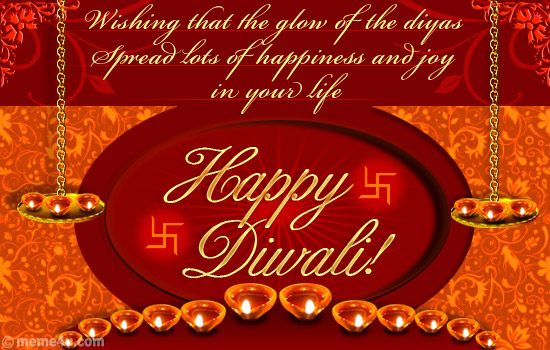
Edited by starry.phoenix - 15 years ago

